The Festival of Min
A few people have commented on the photograph that I recently uploaded for the blog on the homepage and asked what it represents. It comes from a procession, which forms part of the festival scenes of Ramesses (III) Usermaatre-meryamun at his funerary temple on the West Bank, which is now best known as Medinat Habu. This is actually my favourite temple from Kemet, both for the decorations and because it also contains the chapels of the God’s Wives of Amun.
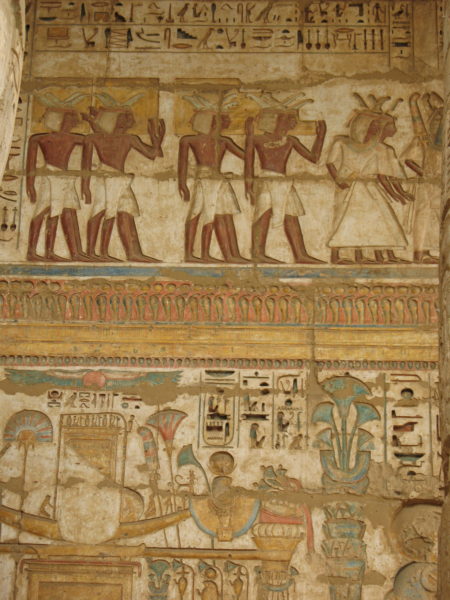
The pigment on the walls is extremely well preserved when compared to most other temples, and presents an idea of how colourful the temples of ancient Kemet once were. It also gives a clear indication of the complexion of the people.
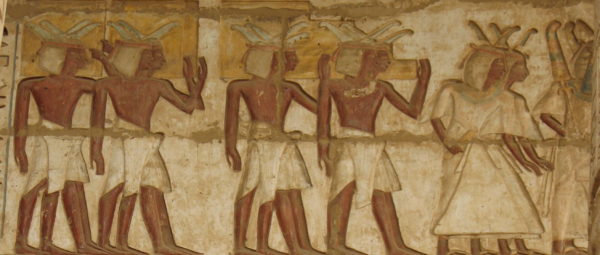
The men features in the relief are royal attendants, in the section that I chose for the blog (shown above) they appear to be carrying the parts of a staircase- you can see the steps that are carried by the men in the middle section. This is a reference to the festival that we see depicted: The Festival of the Staircase. It was on his staircase that the god Min was presented with the first ears of corn from the harvest by the King.
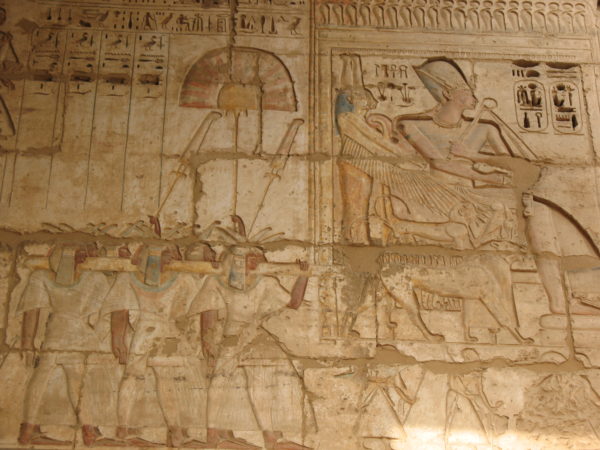
To the right of the first scene is the scene above, which shows the King being carried as part of a procession; the colours used for the this scene were identical to those of the previous section, but as you can see from when I took this photograph, the sunlight falls directly on the wall and has almost erased the pigment.
Min
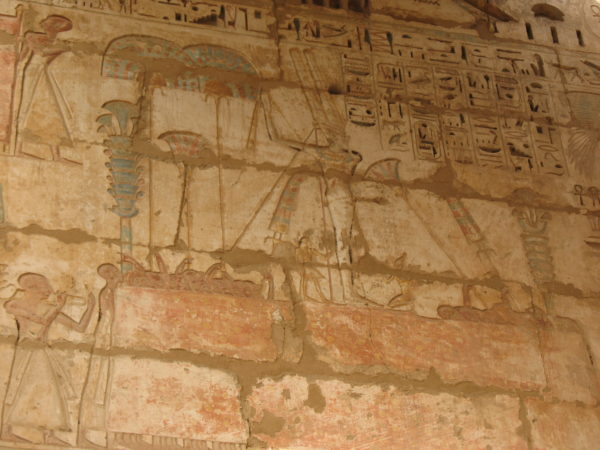
Min was a fertility god, initially of animals but later of vegetation. He is often depicted with lettuce, which was believed to be an aphrodisiac by the people of Kemet. The final section of the procession (above) shows the god standing on a raised area. The procession carrying the King can just be seen to the left, as if walking at the side of the god’s platform ready to present him with offerings at the front. You can just about see their heads and the standards that they are carrying.

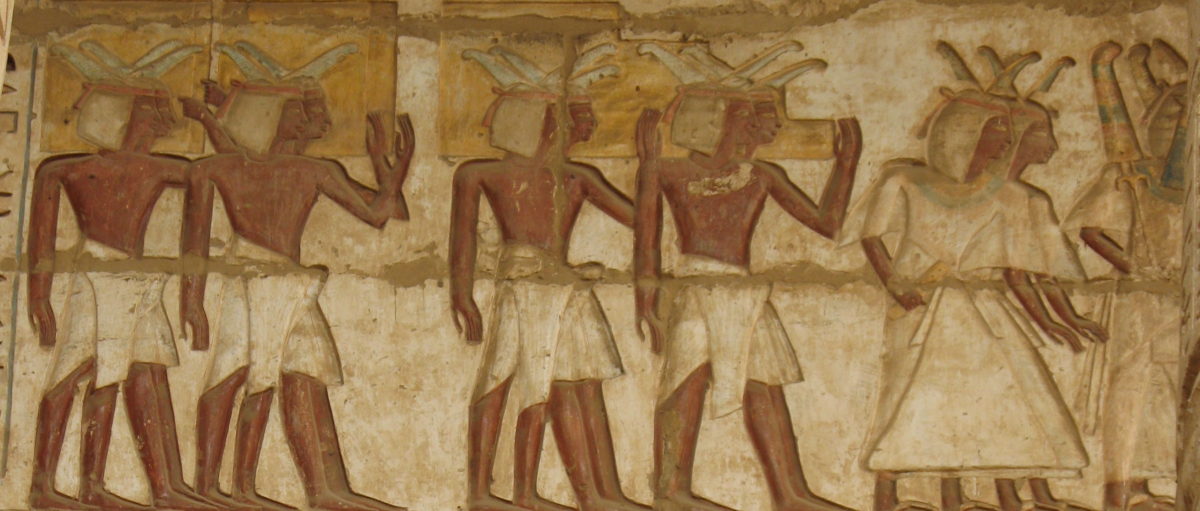
This is an amazing temple, thank you for responding to the inquiries of your readers.
Is this particular section of this religious procession the most well preserved? I find it remarkable that the depictions of these people could last so many thousands of years.
There are a number of sections in this part of the temple where the pigment is well preserved, including the ceiling blocks. It gives a good impression of how colourful many of the temples from this period would have been.